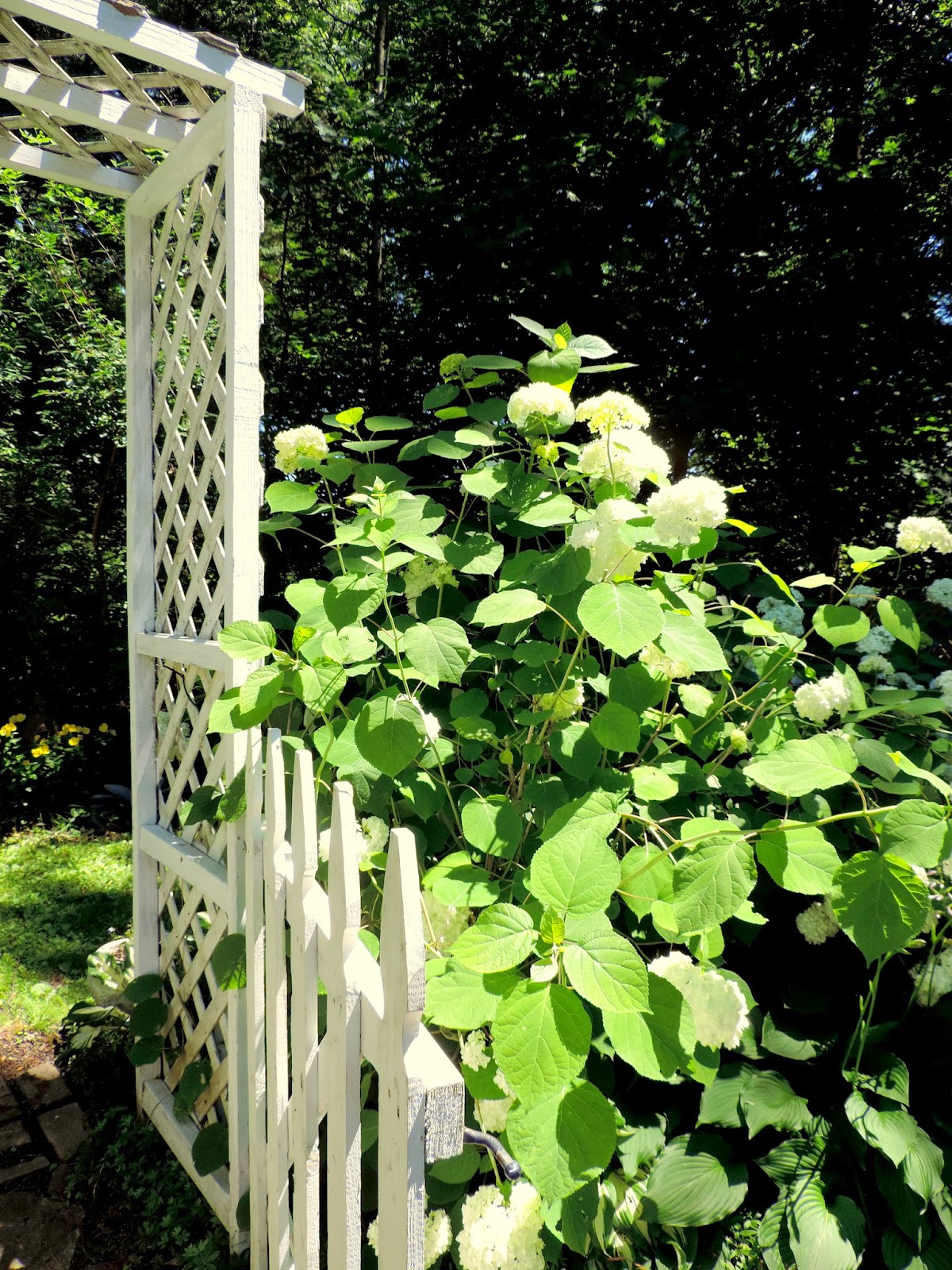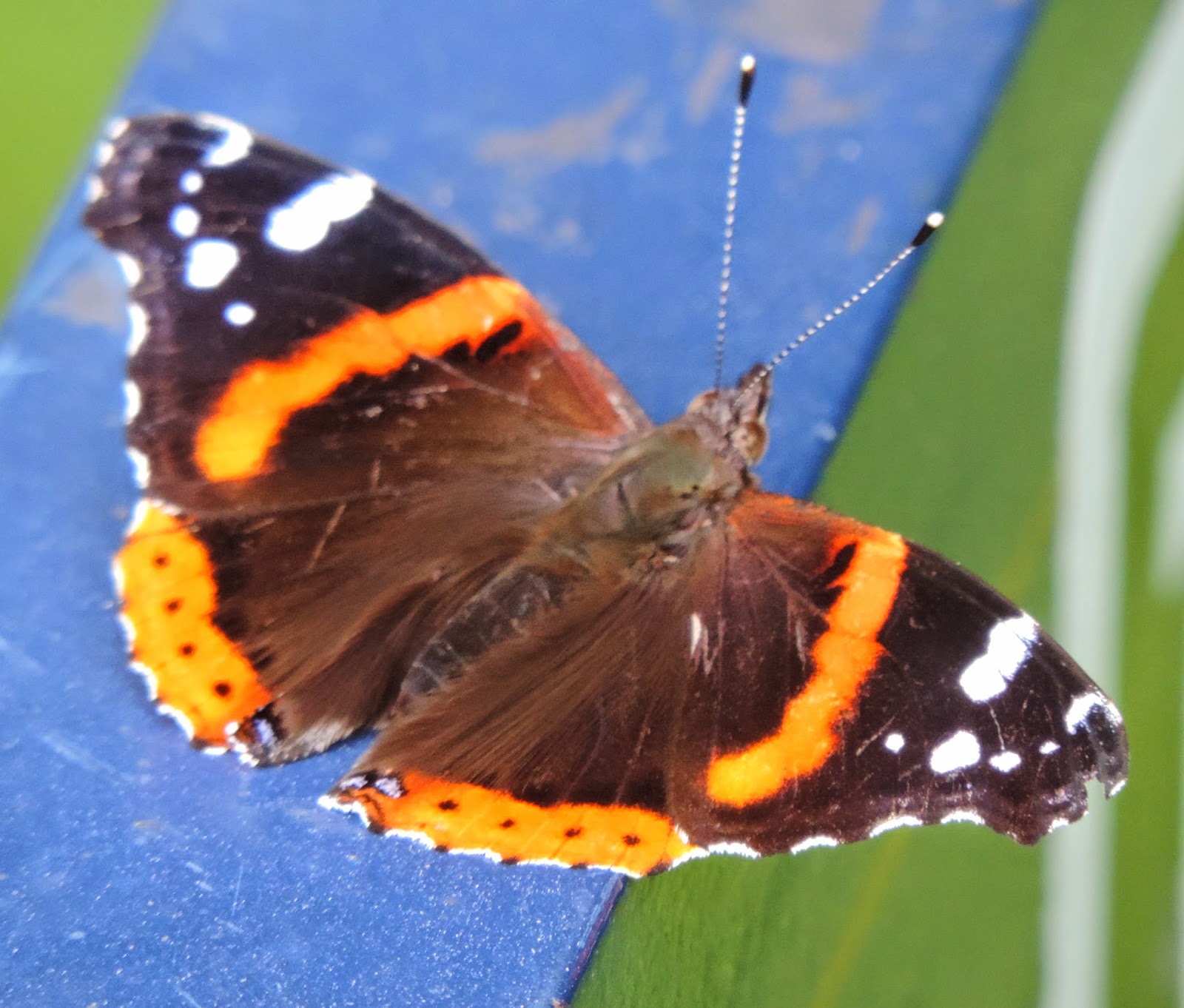No, this isn't an English Lesson!
 This butterfly is named the Question Mark (Polygonia interrogationis). A strange name for a butterfly. It got it's name from markings on the underside (I wasn't able to get a photo of the undersides). I was lucky enough this one landed for a few seconds so I could get a few photos of him.
This butterfly is named the Question Mark (Polygonia interrogationis). A strange name for a butterfly. It got it's name from markings on the underside (I wasn't able to get a photo of the undersides). I was lucky enough this one landed for a few seconds so I could get a few photos of him.Question Mark Butterfly
There have been quite a few different butterflies around, but I still haven't seen any monarchs. My friend, Karen (I featured some photos from her garden in last week's issue of my blog post on Gardening Friends!), sent me this beautiful photo of a butterfly that she recently spotted in her garden. I think it's some kind of fritillary, maybe a Great Spangled Fritillary or a Silver-washed Fritillary.
 |
| Photo by Karen Liscum |
Personal Seasonal thoughts. . .
I like this time of year, and not just because it's summer, but because it's almost like the peak of summer. We've been fortunate in that we've had rain often enough that everything is nice and green and very healthy. We have had several summers where this time of year the rains have ceased, and we have had to water our gardens to keep them from suffering during extended droughts. And if the droughts last quite awhile, the trees start to dry up and their leaves start crinkling and dropping their leaves early. Several perennials are still going strong and the blooms are beautiful.
Another thought for you - enjoy the robins singing in the morning and during the day. It won't be long now (maybe just a few more weeks) before they stop singing their beautiful songs. You might still hear them chirping, but their song will end. I wonder why they only have a spring song? Maybe something to do with the mating season? I don't know. . . thoughts to ponder.
I found the information from this link on Robin Notes:
Q. How do we tell whether a robin in our yard in early spring is a migrant or a territorial bird?
A. It's usually impossible to tell by their appearance unless they have been banded or color-marked, except for one lucky thing. Male robins from Newfoundland and Labrador are darker than other robins, with almost black backs, brighter red underparts, more noticeable striping on the white throat, and a bolder eye-ring. People farther south in Canada and the U.S. may notice the difference when they spot one of these, and then they'll know for sure that these are the northern race rather than their own breeding robins. Many magazine photos of winter robins show these brightly colored ones, which make a lovely contrast against snow-covered branches and orange berries.
But there is another difference between local and migrant robins. Male robins that intend to remain in your area will sing their territorial song. Robins that are passing through will occasionally sing, but not as often, especially at dawn, and usually they remain fairly quiet.
I think this is a Song Sparrow (photo at right). He has been serenading me all summer.
And thought I'd share with you photos of some of my daylilies that are currently blooming -
And -
More info on daylilies: Daylilies Frequently Asked Questions
"And why are you worried about clothing? Observe how the lilies of the field grow; they do not toil nor do they spin, yet I say to you that not even Solomon in all his glory clothed himself like one of these."
New American Standard Bible
Matthew 6:28-29
Thanks for stopping by;
Hope you enjoyed your visit.
Feel free to leave a comment.

















































